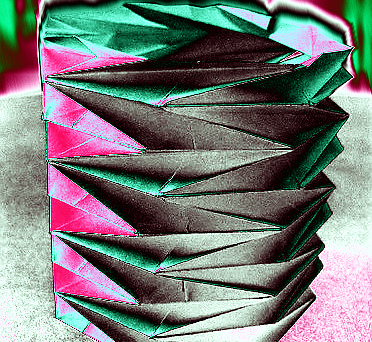Experts fold high-tech blocks
 Researchers are using an ancient Japanese artform to guide the design of new metamaterials.
Researchers are using an ancient Japanese artform to guide the design of new metamaterials.
A new approach to producing metamaterials draws on kirigami techniques to make three-dimensional, reconfigurable building blocks that can be used to create complex, dynamic structures. Because the design approach is modular, these structures are easy to both assemble and disassemble.
“Applying kirigami to three-dimensional materials offers a new level of reconfigurability for these structures,” says A/Prof Jie Yin from North Carolina State University.
Kirigami is a variation of origami that involves cutting paper, in addition to folding it. While kirigami is done using two-dimensional materials, such as paper, Dr Yin and his collaborators have applied the principles of kirigami to three-dimensional materials that are cut into connected cubes.
The new 3D metamaterials could be used in applications such as lightweight construction materials for buildings, components for modular robotics and wave guiding in acoustic metamaterials.
The researchers looked specifically at a series of eight connected cardboard cubes that are open on two sides. Each unit of eight connected cubes functions as a building block. Depending on how the cubes are connected to each other, these building blocks can be folded into more than 300,000 different designs.
“Think of these kirigami units as versatile building blocks that can be assembled to create larger structures with different mechanical properties,” Dr Yin says.
“What’s more, the larger structures can also be disassembled, allowing users to reassemble the kirigami units into new structures.”
Depending on the orientation of the solid cube walls and open sides in each block, and the placement of each block in the larger structure, the structure will behave differently.
This allows users to tune each building block’s mechanical properties. For example, a single building block could be folded into a structure that can be easily compressed, or refolded into a different shape that is capable of bearing a significant load.
To demonstrate the utility of the concept, the researchers created more than a dozen reconfigurable building blocks. Each block consisted of eight connected paper cubes and could be reconfigured into eight different shapes. They can be seen in the video below.
More details are accessible here.








 Print
Print